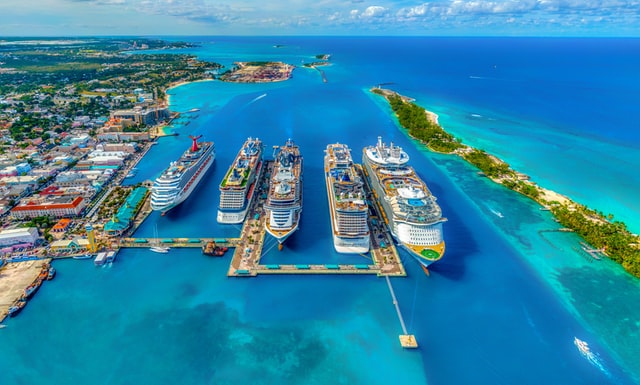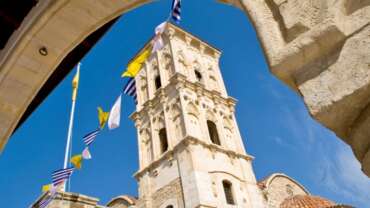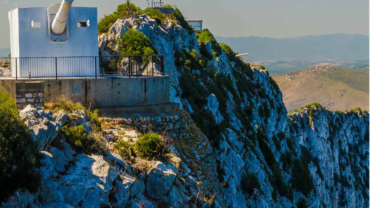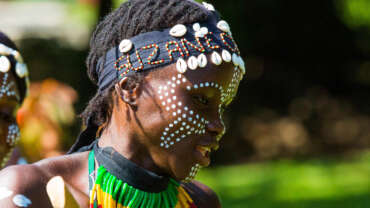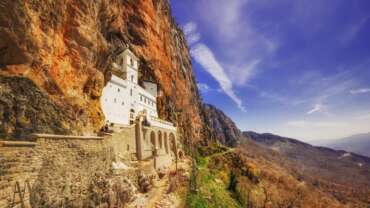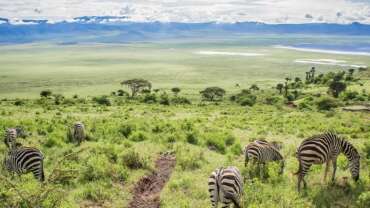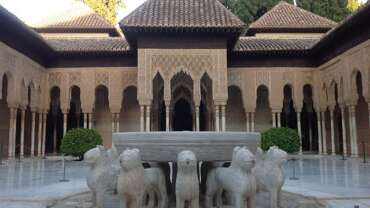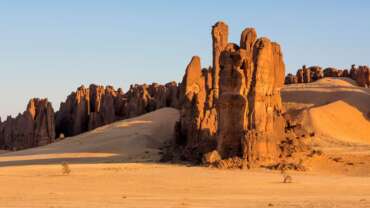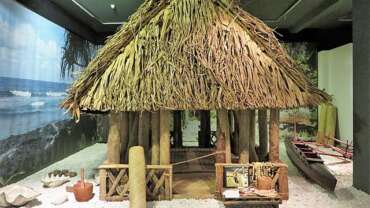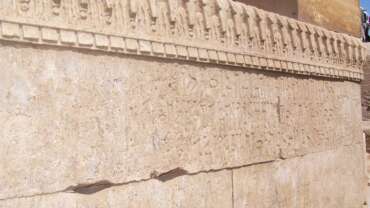Bahamas - Fly Away
The Bahamas, known officially as the Commonwealth of The Bahamas, is a country within the Lucayan Archipelago of the West Indies in the Atlantic. The best kept secret of The Bahamas is the country’s sheer size and diversity. With 16 major islands, The Bahamas is an unmatched destination, a heart-pounding adventure across 100,000 square miles of the world’s clearest ocean.
The name Bahamas is of Lucayan Taino (Arawakan) derivation, although some historians believe it is from the Spanish bajamar, meaning “shallow water.” The islands occupy a position commanding the gateway to the Gulf of Mexico, the Caribbean Sea, and the entire Central American region.
The continued popularity of the islands with tourists, largely from North America, has helped to maintain a relatively high standard of living among the population, most of whom are of African descent. The capital, Nassau, is located on small but important New Providence Island.
Eco Tourism in Bahamas
The Bahamas has long been one of the most eco-friendly destinations in the world—a protector of both the archipelago’s pristine beauty and its endangered species, including the Bahamian Rock Iguana and the West Indian flamingo, the national bird. The critically important work of preserving these natural environments is done by The Bahamas National Trust, an organisation noted for its vast wetland conservation efforts on Andros, New Providence, Exuma, Freeport, and Inagua, home to the largest remaining breeding colony of West Indian flamingos.
NATIONAL PARKS
A treasure trove of biodiversity, the Bahamas National Trust Parks are areas of pure aesthetic beauty and play a crucial part in the conservation of The Bahamas’ natural ecosystems.
ABACO NATIONAL PARK
Spanning 20,500 acres in South Abaco, the Abaco National Park was created to protect the Bahama Parrot and its breeding grounds. Today, with the help of the Bahamas National Trust and conservationists, the park welcomes thousands of Bahamas parrots every spring for the breeding season.
ANDROS NORTH & SOUTH MARINE PARKS
Andros is home to the third-largest barrier reef in the world, the Andros Barrier Reef, measuring over 124 miles long. In an effort to conserve the 8,500 acres of healthiest parts of the reef, these two national parks were created. In turn, a variety of marine life species are protected as well, and there are dive and snorkel spots throughout the parks for people who wish to get a closer look at these flourishing underwater environments.
BLACK SOUND CAY NATIONAL PARK
Located near Green Turtle Cay, this park is an important habitat for many migratory birds, including Painted buntings, Indigo buntings, American redstarts, and others. Mangrove Wetlands, which are important land builders and nursery grounds for many fish, are protected in this area.
BLUE HOLES NATIONAL PARK
Andros, the largest of the Bahamian islands, is home to the highest concentration of blue holes in the world. In an effort to protect these natural wonders, this 40,000 acre national park was formed, creating a safe haven for 22 blue holes and the surrounding pine forests. The park includes nature trails, a gazebo for relaxing, and the famous Captain Bill’s Blue Hole, a popular blue hole to dive into for those feeling adventurous enough.
BONEFISH POND NATIONAL PARK
Bonefish pond, which protects over 1,200 acres of important coastal wetlands, serves as the last remaining tidal mangrove ecosystem on the shores of Southern New Providence. Referred to as an “outdoor classroom” this park is ideal for educational ventures.
CONCEPTION ISLAND NATIONAL PARK
Conception Island, revered as one of the most beautiful Bahamian islands, has been uninhabited by humans for over 100 years. This park is a protected area, home to pink sand beaches, sandstone cliffs, mangroves and an abundance of marine and land wildlife.
CRAB REPLENISHMENT RESERVE
In order to meet the demands of heavy harvesting by Bahamians, the Crab Replenishment Reserve was created. This 4,000 acre reserve is home to both inland and coastal crabs, and crabs like the White and Black Land Crab, which have been a food staple for Bahamians for decades.
EXUMA CAYS LAND & SEA PARK
The Exuma Cays Land & Sea Park is The Bahamas and the wider Caribbean’s first marine reserve. This stretch of over 112,000 acres protects magnificence of coral reefs, mangroves, seagrasses, and tons of wildlife including birds, fish, turtles and iguanas. While you’re here, stroll along pristine beaches, traverse several hiking trails, and observe one of the world’s most stunning ecosystems.
FOWL CAYS NATIONAL PARK
Fowl Cays National Park is smaller in size, but still full of life. The park was introduced as a way to protect the seabed of the surrounding cays. Here you’ll find coral reef, seagrass beds, rocky shore and other valuable habitats.
GRAHAM’S HARBOUR IGUANA & SEABIRD NATIONAL PARK
This park devotes itself to protecting several species of seabirds and San Salvador’s rock iguanas, one of the rarest lizards on Earth. The park also protects extensive seagrass beds and reef systems that are important for fisheries.
GREEN’S BAY NATIONAL PARK
This is another area that protects the rare San Salvador rock iguana. Also within this park you’ll find a reef system, and a stretch of rocky shoreline that supports shearwaters and tropicbirds.
HARROLD & WILSON PONDS NATIONAL PARK
Harrold & Wilson Ponds National Park is 250 acres of protected wetland habitats for birdlife in New Providence. These habitats are extremely important to birdlife, since the concentration and variety of birds such as herons, egrets, ibises, and more, is so high in this area.
HOPE GREAT HOUSE
Located on the west coast of Crooked Island, this 3.6-acre national park protects the ancient remains of some Loyalist plantations from the beginning of the 19th century. This preserved historic property includes an artillery battery and living quarters, and at the top of the ridge you can find cannons.
INAGUA NATIONAL PARK
Great Iguana, the southernmost island in The Bahamas, is home to this 287 square mile park, the site of the largest breeding colony of West Indian Flamingos in the world. After spending forty years on the endangered species list, there are now approximately 70,000 flamingos living on the island. But it isn’t just flamingos you’ll find when visiting. The park is also home to the native Bahama parrot, the endemic Inagua Woodstar Hummingbird, and many other unique bird species.
LEON LEVY NATIVE PLANT PRESERVE
Leon Levy Native Plant Preserve is the first national park in Eleuthera. This 25-acre botanic garden showcases a variety of native and endemic Bahamian plants, along with insects, reptiles, and birds. This preserve is used as a research centre for traditional bush medicine, as well as an educational centre.
LITTLE INAGUA NATIONAL PARK
The largest uninhabited island in the Wider Caribbean, these remote saltwaters contribute to the supply of fisheries, eggs, larvae, and sub-adults that are swept into the other parts of the Bahamian marine territory. The 62,800 acre park is a protected area and nesting location for the critically endangered sea turtle, as well as protection of the marine ecosystem for fishery replenishment purposes.
LUCAYAN NATIONAL PARK
Lucayan National Park is the 2nd most visited park in The Bahamas, and an important part of Freeport’s economy. This park protects one of the world’s longest charted underwater cave systems, preserved remains of the Lucayan Indians, and natural environments like pine forests, mangroves creeks, coral reefs, and the world-famous Gold Rock Beach. This is the perfect park for history and nature lovers alike.
MARINE FARM
Crooked Island’s plantation history dates back to the 19th century. By then, the island was home to more than 40 plantations and 1200 slaves. This 4.4 acre national park protects the remains of some of these historic plantations.
MORIAH HARBOUR CAY NATIONAL PARK
This 6,800 acre stretch of beaches, sand dunes, mangrove creeks, seagrass beds, blue holes, and coral reefs is a vital part of the ecosystem between Great and Little Exuma. The park includes stunning land and seascapes, shifting sandbars, mangroves, creeks, lagoons and more. With these habitats come a variety of wildlife, including birdlife, queen conch, spiny lobster, and others.
PELICAN CAYS LAND AND SEA PARK
Pelican Cays Land and Sea Park, the second land and sea park created at the time of its emergence, is an ideal spot for diving and snorkeling due to the extraordinary reef systems. Among these reefs are a variety of tropical marine life, with more than 170 species, including the endangered sea turtle, documented within the park.
PETERSON CAY NATIONAL PARK
This small, one-and-a-half acre area of protected marine habitat is recognized as an Important Bird Area because of its significant population of Bridled Terns.
PIGEON CREEK & SNOW BAY NATIONAL PARK
As San Salvador’s only tidal creek, Pigeon Creek is an important conservation area. The park’s creek houses mangroves, seagrasses, hard bottom corals and sponges and is home to the island’s main population of sea urchins. It’s the only nursery area for the Nassau Grouper, as well as a nursery for spiny lobster and reef fish.
PRIMEVAL FOREST NATIONAL PARK
This undisturbed old-growth woodland is reminiscent of the early tropical forests of The Bahamas. Home to dramatic sinkholes, diverse animals and plants, and one of the last remaining places you can find the blackland coppice that once covered the island.
RAND NATURE CENTRE
Rand Nature Centre in Freeport is now home of the administrative office of the Bahamas National Trust. The centre is home to a wide range of flora, and a well-known birding spot.
THE RETREAT GARDEN
The Retreat Garden is exactly how it sounds- a retreat from the hustle and bustle of Nassau. This botanical garden is 11 acres of rare tropical plants, palms, native hardwoods, and a haven for migratory and residential birds.
SOUTHERN GREAT LAKE NATIONAL PARK
Southern Great Lake National Park, located in the centre of San Salvador, protects an extensive mangrove ecosystem and the endangered San Salvador rock iguana.
TILLOO CAY NATIONAL RESERVE
This park was created in efforts to protect several species of Tropic Birds, which use this cay’s shoreline as a nesting site. Among these birds is the White-Tailed Tropicbird, the typical Tropicbird of The Bahamas. This 11-acre area is brimming with natural beauty.
UNION CREEK RESERVE
Union Creek, a known sea turtle research centre, is located in the northwest corner of the Inagua National Park. This reserve is a natural habitat for Green and Hawksbill turtles, along with mangroves and lush seagrass beds. This reserve plays a large role in protecting the endangered sea turtle population.
WALKER’S CAY NATIONAL PARK
With its own barrier reef surrounding this northern cay, Walker’s Cay is brimming with unique marine life and ideal for diving excursions.
WEST COAST MARINE PARK
West Coast Marine Park is famously recognized as the place where Christopher Columbus first made landfall in The Bahamas. Home to breathtaking coral wall formations and pristine beaches, divers and visitors find this park an alluring attraction.
Romance & Weddings in The Bahamas
The Bahamas delivers the spectacular. With 16 unique islands, the possibilities for your Big Day are endless. Getting your marriage licence is easy and our wedding specialists are here to assist every step of the way.
TOP REASONS WHY
MORE COUPLES GET MARRIED IN THE BAHAMAS
Otherworldly Scenarios
Dream-come-true settings are our specialty.
Begin Ever After, Right After
Marry on one island; honeymoon on another.
SOMETHING BLUE
A wedding on a secluded sandbar is intimate, yet grand. Share it with a few of your closest friends or let it be just the two of you, married under an arbour in the middle of the ocean.
Get Married on One Island,
HONEYMOON ON ANOTHER
Top off the island destination wedding of your dreams with a seamless honeymoon exit. The destination? One of the dozens of easy-to-reach islands–ranging from laid-back Eleuthera to luxe Harbour Island–where you can slip off the grid and revel in island romance.
From pink sand beaches and lush tropical gardens to elegant ballrooms and intimate hideaways, The Islands of The Bahamas offers countless magical settings for your wedding ceremony.
People to People Experience
Our People-to-People programme is based on a simple idea—locals know best.
This immersive cultural experience pairs inquisitive travellers with volunteer locals who generously open their hearts and homes to share their love of these islands. Ask anyone who has connected through the People-to-People programme; they’ll tell you it’s the fastest and best way to find the tastiest fish fry on Arawak Cay in Nassau, reach the most secluded beaches on Long Island, and discover the most photogenic corners in Freeport’s Lucayan National Park.
EXPERIENCES
CULTURE
If you love history and culture, we’ll pair you with a like-minded culture buff to explore The Bahamas’ past and present. From seaside fortresses to pirate hideaways, you’ll enjoy a unique opportunity to hear about the historic events that shaped our beloved islands. A day with an ambassador might include:
– A guided tour of Fort Fincastle and a walk up the Queen’s Staircase in Nassau.
– A look around Bimini’s Dolphin House Museum.
– A visit to Johnston’s Bronze Art Foundry in The Abacos.
– A tea party at Nassau’s historic Government House, hosted by prominent Bahamian women.
CULINARY
If you’re a food lover, we’ll connect you with a fellow foodie for a once-in-a-lifetime culinary adventure in The Bahamas. Our ambassadors love introducing visitors to their favourite restaurants and they’ll often invite you into their home for an authentic Bahamian meal. They might even:
– Take you to the Fish Fry at Arawak Cay for island favourites like conch salad and fried snapper.
– Invite you to a “sip sip” (aka a good-natured gossip session with the neighbors).
– Share their family recipe for Johnny cakes.
NATURAL WONDERS
The Bahamas is an ecological oasis with endless natural wonders just waiting to be explored. We’ll introduce you to an ambassador who knows the ins and outs of every blue hole and pink sand beach. Highlights include:
– Diving into Dean’s Blue Hole on Long Island, the second deepest in the world.
– Marvelling at the beauty of the Glass Window Bridge in Eleuthera.
– Walking through all six of The Bahamas’ ecosystems within Freeport’s Lucayan National Park.
FAMILY
Bringing the kids? Tag along with one of our ambassadors and get the inside scoop on The Bahamas’ best family-friendly activities. Whatever the age range and interests of your family, you’ll enjoy a unique opportunity to experience The Bahamas just like a local. A typical day might include:
– Feeding the sun-loving iguanas in The Exumas.
– Shopping for Bahamian-made souvenirs at Nassau’s world-famous Straw Market.
– Riding the waves on Surfer’s Beach in Eleuthera.
– Meeting the pink flamingos at Ardastra Gardens, Zoo & Conservatory in Nassau.
AN ISLAND FOR EVERY OCCASION

The Bahamas is an unmatched destination for group travel. Across 16 main islands, find resorts, hotels, villas and venues to suit all budgets and group sizes. Plus, getting here couldn’t be easier with direct airlift from most major cities in the US and Canada, and flight times as short as 50 minutes from the Florida coast. Whatever is in your agenda – a small corporate event, a conference to spark creative spirits, or a team-building exercise that doubles as a tropical getaway – The Islands of The Bahamas can turn your vision into reality.



